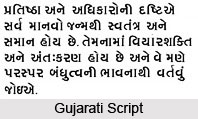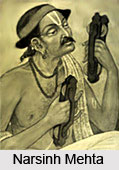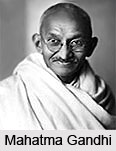 Gujarati is an Indo Aryan language, part of the greater Indo-European language family. It is one of the 22 official languages and 14 regional languages of India. Gujarati is native to the Indian state of Gujarat, and is also spoken language in Gujarat as well as in the union territories of Daman and Diu and Dadra and Nagar Haveli. It is also the language of the
large Gujarati community in Mumbai. There are about 46 million speakers of Gujarati worldwide, making it the 23rd most spoken language in the world. Of these, 45.5 million reside in India, 150 000 in Uganda, 250 000 in Tanzania, 50 000 in Kenya and roughly 100,000 in Pakistan. A considerable population of Gujarati speakers exists in North America and the United Kingdom as well. Gujarati was the first language of Mohandas K. Gandhi, the "father of India", Mohammed Ali Jinnah, the "father of Pakistan" and Sardar Vallabhbhai Patel, the "iron man of India".
Gujarati is an Indo Aryan language, part of the greater Indo-European language family. It is one of the 22 official languages and 14 regional languages of India. Gujarati is native to the Indian state of Gujarat, and is also spoken language in Gujarat as well as in the union territories of Daman and Diu and Dadra and Nagar Haveli. It is also the language of the
large Gujarati community in Mumbai. There are about 46 million speakers of Gujarati worldwide, making it the 23rd most spoken language in the world. Of these, 45.5 million reside in India, 150 000 in Uganda, 250 000 in Tanzania, 50 000 in Kenya and roughly 100,000 in Pakistan. A considerable population of Gujarati speakers exists in North America and the United Kingdom as well. Gujarati was the first language of Mohandas K. Gandhi, the "father of India", Mohammed Ali Jinnah, the "father of Pakistan" and Sardar Vallabhbhai Patel, the "iron man of India".
History
Gujarati, in contrast with most other Indian languages, is considered to be a relatively young language, with its origins traced back to around the 12th century AD. A formal
grammar of the forerunner of this language was written by Jain monk and eminent scholar Hemachandr acharya in the reign of Rajput king Siddharaj Jayasinh of Anhilwara (Patan).  This was referred to as an Apabhramsha grammar, signifying a "corrupted" form of the formal languages of the time, Sanskrit and Ardhamagadhi Prakrit. The earliest literature in the language survives in oral tradition and can be traced to the Krishna devotee and great equalitarian Narsinha Mehta. The story of Narsinh Mehta himself was composed in the 17th century as a long narrative poem by Premananda. He was accorded the title mahakavi or "great poet" by modern historians of the language.
This was referred to as an Apabhramsha grammar, signifying a "corrupted" form of the formal languages of the time, Sanskrit and Ardhamagadhi Prakrit. The earliest literature in the language survives in oral tradition and can be traced to the Krishna devotee and great equalitarian Narsinha Mehta. The story of Narsinh Mehta himself was composed in the 17th century as a long narrative poem by Premananda. He was accorded the title mahakavi or "great poet" by modern historians of the language.
Premananda was a vyakhyankar, or traveling storyteller, who narrated his subject in song and then perhaps elaborated on the lines in prose. His style was so fluent that his long poems, running into hundreds of lines, were nonetheless memorised by the people and are still sung today. In this sense, the oral tradition of the much more ancient Vedas was clearly continuing in India till late. In the medieval periods of Gujarat`s history, poetry was employed to express religious sentiments. The first work of poetry in Gujarati is considered to be "Bharateswara Bahubali Rasa", composed by Shalibhadrasuri, a 7th century Jain monk. A number of Jain Sadhus followed his example and composed short storytelling poems called "Rasas" till the end of the 18th century AD.
 After the rise of Mahatma Gandhi`s relative importance in a steadily strengthening struggle for Independence and social equality, a great volume of poetry, written by poets like Umashankar, Sundaram, Shesh, Snehrasmi and Betai, among others, were centered on the existing social order, the struggle for Independence and the travails of Mahatma Gandhi himself. Post-Independence Gujarati poetry displays a higher form of subjectivity and explores newer philosophies and lines of thought and imagery.
Geographic distribution
After the rise of Mahatma Gandhi`s relative importance in a steadily strengthening struggle for Independence and social equality, a great volume of poetry, written by poets like Umashankar, Sundaram, Shesh, Snehrasmi and Betai, among others, were centered on the existing social order, the struggle for Independence and the travails of Mahatma Gandhi himself. Post-Independence Gujarati poetry displays a higher form of subjectivity and explores newer philosophies and lines of thought and imagery.
Geographic distribution
Official status
Gujarati is officially recognized in the state of Gujarat, India.
Dialects
As with most languages, Gujarati comes in various regional dialects that differ in pronunciation, vocabulary, and grammar. Some dialects have many Arabic and Persian borrowings, while others, such as the southern dialects, take more from Portuguese and English, while others take more from Hindi. It is not a single language, and was only created 4 to 5 centuries ago.



















